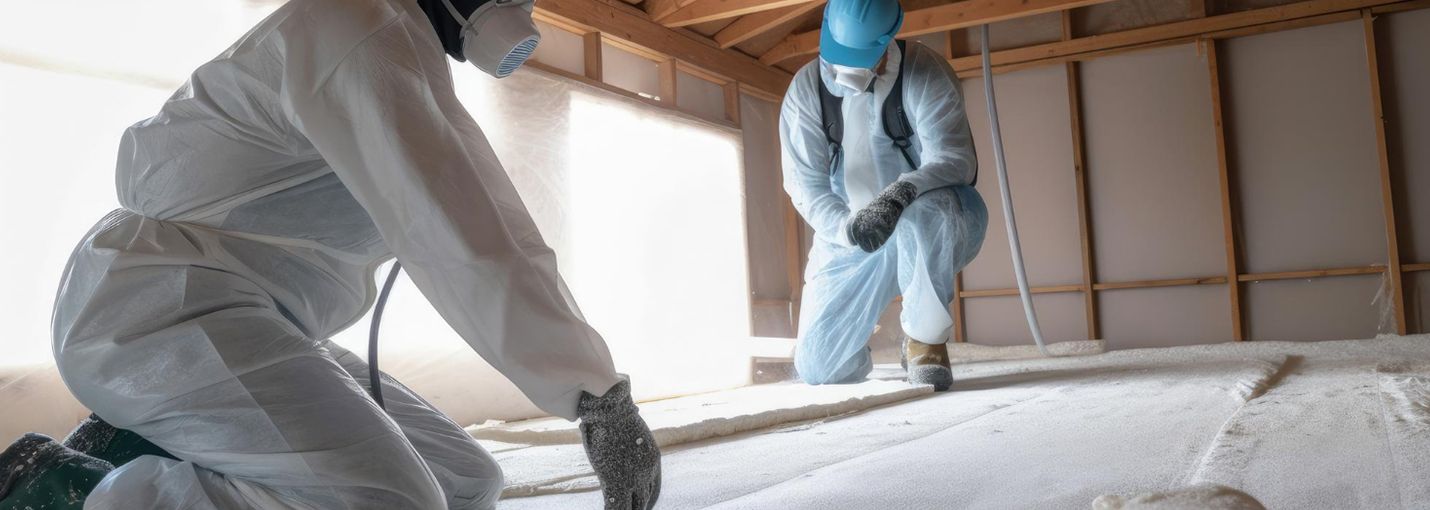The harmful health effects of asbestos have led to its elimination from industry in many areas of the world, and in the late 1980s, the United States Environmental Protection Agency (EPA) issued regulations greatly restricting its use. The exact year asbestos was last used may vary from country to country, and in many areas, is yet to be determined.
It should be noted that in 2002, the United States officially ceased the mining of asbestos – although it continued to allow importation of the mineral. And today, abandoned mines remain health risks to nearby residents who continue to risk exposure in air, water, and soil surrounding their communities.
!
If you believe that you were exposed to asbestos, even as a child, speak to a healthcare provider about tests and screening to help diagnose lung-scarring and screen for asbestos-related diseases.
Regulations & Bans Ongoing: Worldwide Elimination Possible?
The fatal health consequences associated with asbestos have led to use restrctions in many countries, including the United States. It is now widely recognized that asbestos causes life-threatening conditions such as various lung diseases and many different forms of cancer. The EPA put regulations into place to protect public health; however, it has yet to ban asbestos outright, and the mineral continues to be used unrestricted in other areas of the world.
| Asbestos is highly resistant to heat, pressure and corrosion, so it was used in many products, vehicles and buildings. In particular, many workplaces like factories, refineries, foundries and shipyards involve high amounts of heat, and were built with a lot of asbestos. | |||
  |   |   |   |
Worldwide regulation of asbestos based on health studies
Most countries that banned the production of asbestos only did so for certain types instead of opting for an all-inclusive ban. This is despite the fact that recent studies have shown 5 out of the 6 types of asbestos are harmful. Russia, for instance, is the supplier of 60% to 75% of all asbestos used worldwide, and the country has banned only one type, amphibole, which was eliminated from use in 1999.
“The overall evidence suggests there is no safe level of asbestos exposure.”Source: National Cancer Institute (NIH)1 |
Given that worldwide regulations regarding asbestos vary widely, it’s difficult to determine whether there will one day be a push toward total elimination from industry.
“Some asbestos fibers may bypass…your body’s natural defenses…and lodge deep within your lungs. Those fibers can remain in place for a very long time and may never be removed.”Source: American Lung Association |
The Consequences of Exposure
The health effects of asbestos exposure can not be overstressed, and individuals who came into contact with asbestos directly aren’t the only ones in danger of developing a chronic illness.
“It has been repeatedly and consistently demonstrated in the medical and scientific literature that family members exposed to asbestos dust from laundering a worker’s clothing have a significantly increased risk of developing mesothelioma.”-U.S. Supreme Court, 2018. Air and Liquid Systems Corp. v. DeVries, 139 S. Ct. 986, 586 U.S., 203 L. Ed. 2d 373 (2019). |
Second-hand asbestos exposure is asbestos exposure.
(It is also called ‘take home’ exposure.)
Secondhand exposure continues to plague those who had family members who worked in the industry years ago. Also, the subtle nature of asbestos-related diseases means they tend to take decades to exhibit symptoms. Those who continue to be exposed today may not develop symptoms until years down the road.
“Generally, those who develop asbestos-related diseases show no signs of illness for a long time after exposure.”Source: National Cancer Institute (NIH)2 |


What’s Being Done About the Ongoing Asbestos Problem?
In 2010, the American Public Health Association and other international bodies called for a worldwide ban. The World Health Organization (WHO) has also been working actively to eliminate mesothelioma since 2005. The agency presented a comprehensive plan during the 66th World Health Assembly that sought to fight against all life-threatening diseases, including those caused by asbestos.
  |
| Nearly every building constructed before the mid-1980s contained asbestos products and building materials. |
  |
The EPA, on the other hand, is considering new rules that involve electronic reports of information related to the exposure of asbestos from companies that manufactured it. Given that there is no cure for asbestos-related disease, the federal government aims to establish accountability, and also, aid individuals who have already been exposed.
1 in 5
In studies of asbestos disease, 1 in 5 cases of asbestos exposure were caused by secondary asbestos exposure.3
These new rules were published in May 2022 with different requirements to cleanup and dispose of asbestos. These requirements are tailored towards various sectors, including domestic manufacturers, importers, and processing plants.
There are also plans to ban the use of chrysotile specifically, the only form of asbestos still imported into the United States.
The EPA has played a vital role, in general, to create awareness of the dangers of asbestos and continues to lead the charge. However, the influence of EPA in a potential worldwide ban on asbestos is significantly limited.
Asbestos has no taste or smell.
You may not know you’re breathing it.


Proper Removal
Unless and until asbestos is banned entirely, it’s important to concentrate on proper removal when it’s found. Demolitions and renovations of buildings that contain asbestos may release asbestos fibers into the air which endangers anyone nearby.
Do You Qualify For Compensation?
Quickly and easily find out how you were exposed by searching W.A.R.D., the largest asbestos database on the planet.
FREE SEARCH >Asbestos abatement is highly regulated because it involves significant risk. (Use a professional abatement company.)
Abatement is the removal of asbestos, and due to its delicate nature requires following strict safety protocols. The process of abatement involves sealing asbestos materials to prevent the release of fibers – this is referred to as encapsulation – and taking it to a designated facility for disposal. A total removal process is initiated if encapsulation is not viable.
Licensed and certified asbestos abatement companies use proper methods, and carry insurance in case of risk.
Using a licensed abatement company will ensure that the removal and disposal of asbestos is done safely. These companies have the proper equipment to keep everyone protected. It’s never a good idea to attempt a DIY removal. Doing so is far too dangerous. Working with a pro will help building owners avoid financial and legal issues while safeguarding against any exposure.
Sharing a home or vehicle with someone wearing asbestos-tainted clothing puts you at risk of asbestos-related diseases. 4 5 6 7 8
Secondhand Exposure to Asbestos
The National Cancer Institute and the American Lung Association, along with other health experts in the field, insist that no amount of asbestos exposure is safe – even minute amounts. This is contrary to proper belief that a person has to be exposed to a large amount over an extended period of time to ultimately fall ill.
While it’s true that this increases the risk of developing an asbestos-related disease, an individual doesn’t have to be chronically exposed to encounter consequences. Even secondhand contact with asbestos can cause just as much harm as coming into direct contact with these microscopic fibers.
Smokers exposed to asbestos are up to 50 times more likely to develop lung cancer than nonsmokers who aren’t exposed.9 |
In the early 20th century when asbestos use was at an all-time high, family members of asbestos workers were exposed after coming into contact with work clothes and riding in family vehicles.
Those employed in occupations that involved the handling of asbestos would inadvertently carry the tiny fibers home, only to spread them throughout their space. Today, many legal cases involving asbestos exposure involve secondhand claims.
“All forms of asbestos are carcinogenic to humans.” 10
Conclusion on asbestos regulation
While there is no exact year in which asbestos stopped being used, many areas of the world continue to work toward total elimination, and some countries have already outwardly banned its use. Other countries, including the U.S., are focused more on harm reduction through the institution of laws regarding safe handling and disposal.
Over $30 Billion is still available (No lawsuit. No fees unless you receive money. No risk.) Stake your claim.   |
This, of course, doesn’t mean there won’t come a day in which various areas of the world collectively decide that the risks associated with asbestos in industry warrant an all-out ban. As people continue to fall ill and legal cases continue to be filed, it’s clear that the negative consequences associated with exposure far outweigh any benefits to keeping its use alive and well.
AsbestosClaims.Law
Asbestos claims aren’t just a day in the office for Justinian C. Lane.
They’re a mission.
In the past, workers exposed to asbestos were kept in the dark about the dangers of asbestos exposure. Among those workers were Justinian’s grandparents and his own father.
Unfortunately, they were also kept in the dark about the compensation options available to them, such as asbestos lawsuits and trust funds. In their later years, they died from asbestos-related cancers.
Because no one in Justinian’s family knew their options, they never received any compensation for the death of their loved ones.
Today, we’re working to turn the tide.
Significant compensation may be available to you if you have contracted an asbestos-related illness or injury. This includes workers as well as family members who have been exposed.
Compensation is your key to receiving the medical treatment you need, funding asbestos removal services, and maintaining your physical well-being.
Want to know one of the quickest and easiest ways to receive compensation? Let us talk to you about asbestos trust claims. This option can often avoid lawsuits altogether.
We want to hear your story, and more importantly, we want to bring redemption to it.
Need help filing a claim? No problem, you can email us at [email protected].
Would you rather talk over the phone? Simply call or text us, at (206) 455-9190.
You won’t pay a penny to us unless you receive money first, so there’s no risk.
In addition to legal claims, veterans disability, social security and employment protection like workers compensation, FELA and The Jones Act for maritime workers, there are asbestos trusts that have been set up to compensate those harmed by asbestos without having to file a lawsuit.
The dangers of asbestos used to be an industry-guarded secret kept from suffering people like Justinian’s family. Not anymore. We’re bringing you the truth.
We’ve created numerous resources to help answer your questions and empower you with the information you need to know and act on.
Our website has a wealth of information dedicated to things like health and safety, asbestos testing, asbestos removal, and legal information about compensation for asbestos injuries.
Are you a visual learner? No problem!
Our YouTube page has infographics, an asbestos history series, and other helpful resources for you to check out!
| Not sure where or when you were exposed to asbestos? Let W.A.R.D. help you! The Worldwide Asbestos Research Database (W.A.R.D) is the largest asbestos information database, period. If you need answers related to specific locations, products, or what type of compensation may be available to you due to asbestos exposure, W.A.R.D. is the place to start. |
Working with us is risk-free. Unless you receive compensation money, there are NO FEES! Speak to us about asbestos litigation today.
Sources:
Did the Ban on Asbestos Reduce the Incidence of Mesothelioma? ., Carbone, M., Yang, H., Pass, H.I. and Taioli, E., 2023. Journal of Thoracic Oncology, 18(6), pp.694-697.
Where Is Asbestos Found? , Agency for Toxic Substances and Disease Registry, CDC Website (May 19, 2023).
1 National Cancer Institute (NIH), Asbestos Fact Sheet.
2 Ferrante, D., Bertolotti, M., Todesco, A., Mirabelli, D., Terracini, B. and Magnani, C., 2007. Cancer mortality and incidence of mesothelioma in a cohort of wives of asbestos workers in Casale Monferrato, Italy. Environmental Health Perspectives, 115(10), pp.1401-1405.
3 Miller, A., 2005. Mesothelioma in household members of asbestos‐exposed workers: 32 United States cases since 1990. American journal of industrial medicine, 47(5), pp.458-462.
4 Reid, A., Heyworth, J., De Klerk, N. and Musk, A.W., 2008. The mortality of women exposed environmentally and domestically to blue asbestos at Wittenoom, Western Australia. Occupational and environmental medicine, 65(11), pp.743-749.
5 İşten, B.H.S.T.O. and Maruziyetler, E.T., 2021. Exposures Moved from Work to Home as a Public Health Hazard.
6 IARC Working Group on the Evaluation of Carcinogenic Risks to Humans. Arsenic, metals, fibres, and dusts. IARC Monographs on the Evaluation of Carcinogenic Risks to Humans. 2012 ;100(Pt C):11-465. PMID: 23189751.
7 National Cancer Institute (NIH), Asbestos Fact Sheet.
7 Klebe, S., Leigh, J., Henderson, D.W. and Nurminen, M., 2020. Asbestos, smoking and lung cancer: an update. International journal of environmental research and public health, 17(1), p.258.
10 Anua, S.M., Semple, S., Shakri, S.F.M., Safuan, S., Mazlan, N. and Asri, A.A.M., 2019. A review of the take-home exposure pathway of workplace hazards. International Journal of Medical Toxicology & Legal Medicine, 22(3and4), pp.13-19.




